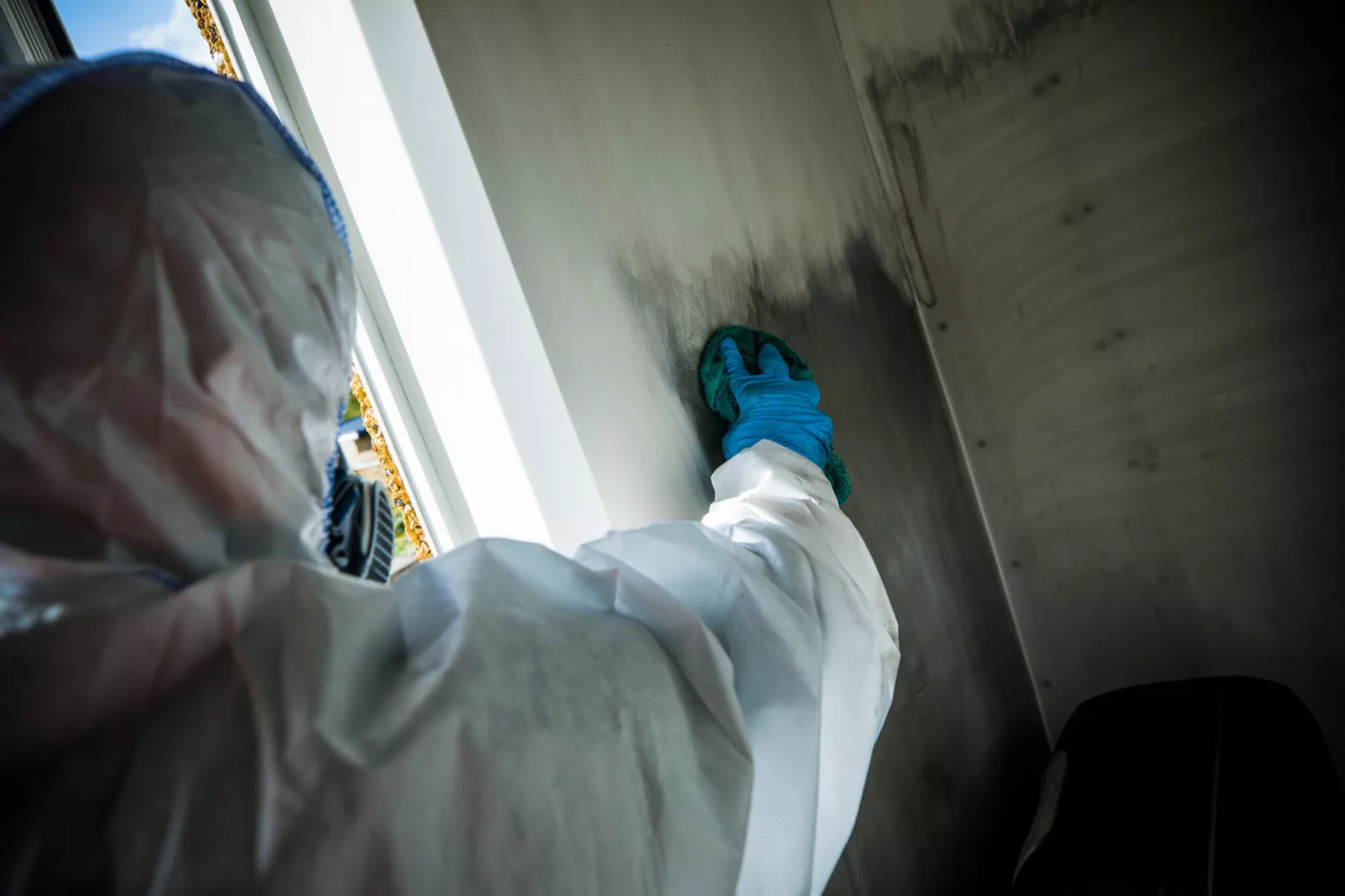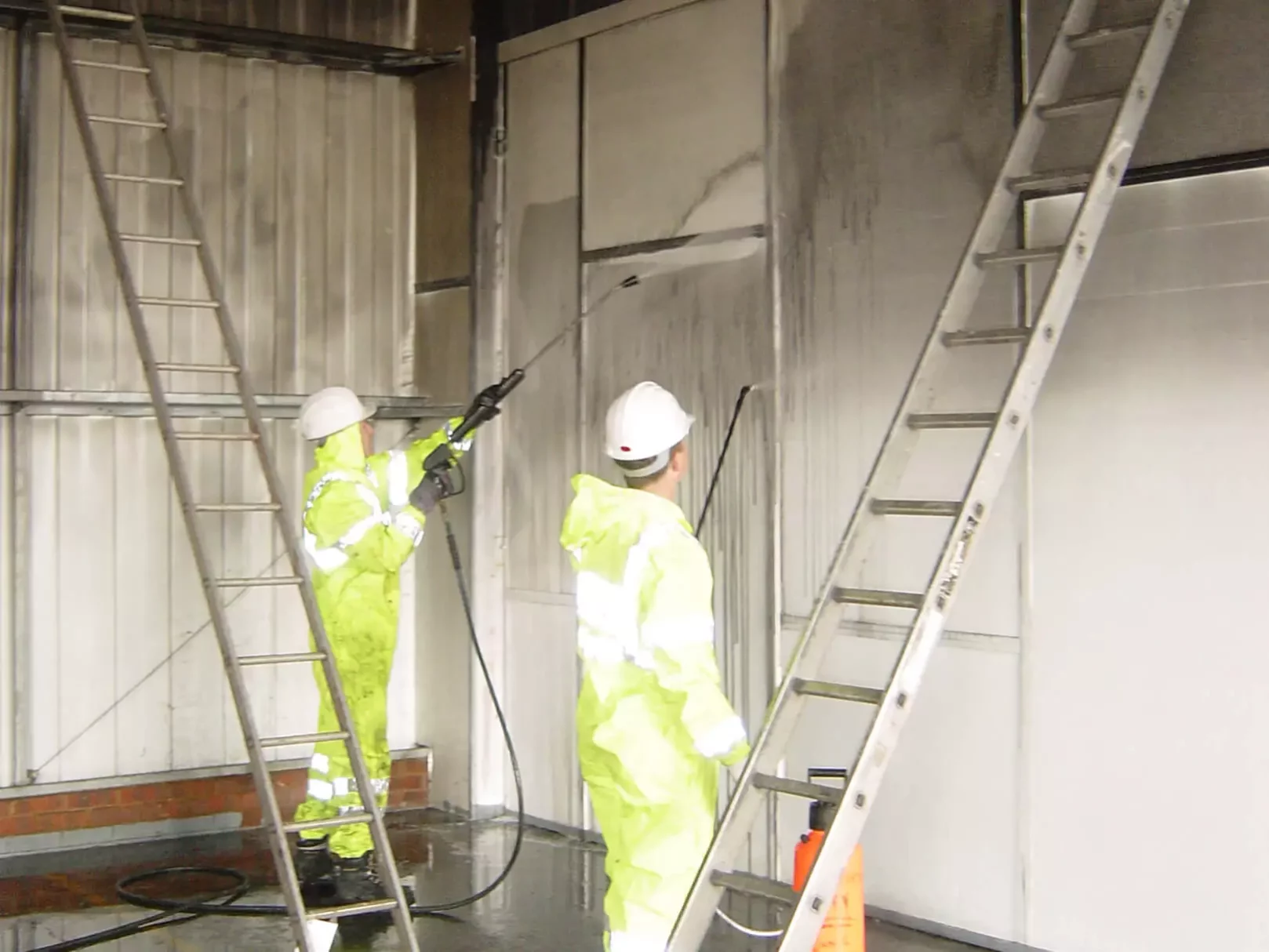In short, the answer is no. No matter how big or small the fire that caused it was.
Smoke damage is a major health risk, whether it’s the result of a full on house fire or a localised fire that was contained to one room.
It’s easy to assume that the smoke from a fire that only affected one appliance and didn’t reach any other rooms will be contained to that area. For example, if the microwave caught fire and was dealt with quickly, it’s not unreasonable to think that the upstairs bedroom wouldn’t possibly be affected by smoke damage.
But this isn’t entirely accurate.
While smoke seems to dissipate quickly, it is incredibly invasive. It will find its way into all manner of places around the home, using whatever means possible. Sometimes this means you’ll find smoke damage within HVAC vents, sometimes you’ll find the most smoke damage behind walls, it’s often found in furnishings, and it’s not uncommon to find smoke damage within light fittings and electrical sockets.
Even if you cannot see any smoke, there could be still be smoke particles which you cannot see. And it’s the smoke particles which are a health risk.
What is smoke damage?
Smoke damage is the physical damage caused by smoke that’s generated by a fire, not the damage caused by the fire itself. Caused by the remnants of the fuel that fed the fire, smoke does not destroy items like fire does. Instead, it coats objects in soot and odour.
The composition of smoke is complex, but often results in a greasy layer, making it particularly difficult to remove. Even so, no matter how small or large the fire, smoke will want to travel to cooler areas and will use whatever means available to get there. This can include ducting, wiring, pipes, or any other crevices. This means that smoke has often reached places you cannot even see.
While smoke may seem to dissipate quickly, the quick cooling of the particles leave a film and odour able to penetrate the contents of a building, and its structure.
Can fire smoke damage make you sick?
Fire damage is heat damage and is what causes objects to melt and burn. Smoke damage doesn’t destroy items like fire damage does, however, they are both incredibly hazardous to health.
The number one cause of death related to fires is smoke inhalation. And this occurs when the products of combustion are inhaled during a fire.
Smoke is a mixture of heated particles and gases, and it’s impossible to predict its exact make up. The items burned, the temperatures reached, and the amount of oxygen available all play a part in determining the type of smoke produced. For example, wood fires create a completely different kind of smoke to protein fires.
Not only can smoke inhalation cause burns to the respiratory system, but it can cause further complications which can result in death or permanent damage. Coughing, vomiting, nausea, confusion and sleepiness are all signs of smoke inhalation.
During smoke inhalation, you have more carbon monoxide in your lungs which prohibits oxygen into your body. Fires also burn oxygen, removing it from the atmosphere and thus there’s less for you to breathe in. Prolonged exposure to smoke inhalation can result in death or permanent brain damage. At the least, it will require treatment in hospital.
Health risks of staying in a smoke damaged house
You could be forgiven for thinking that the health risks of fires are removed once the flames are doused. But this isn’t entirely accurate.
Smoke can be incredibly toxic. Tar and carbon are just two of its common byproducts, but smoke can also contain heavy metals and other toxins. If these are breathed in over a period of time, they can go on to cause health implications.
Breathing can become difficult if staying in a smoke damaged house. Lungs and sinuses can be affected directly, making breathing hard. And residual particles in clothing and furnishings can irritate the skin, which cannot be treated with lotions. Sometimes, these skin irritations can be severe.
Therefore, even if you cannot see any smoke damage it’s vital that you have a fire restoration company come in and complete a thorough clean and decontamination of the entire property. Remember what we said earlier; even a small appliance fire that’s dealt with quickly and contained to one room can still cause smoke damage in areas of the property that you cannot even see.
Residual carbon monoxide can also prevent much needed oxygen reaching the heart, brain, and other organs.
Summary
It’s not just the immediate fire that’s a risk to your health. Staying in a property that’s had a fire—whether you can see smoke damage or not—is a risk to health, especially children, the elderly, and those with compromised immune systems.
Smoke does not only affect the room in which a fire was located. It can travel a long way, far from the original source of the fire and will use whatever means it can to get there, including HVAC venting and pipes. It can get into all manner of crevices including gaps in the wall and electrical sockets; just because you cannot see it, doesn’t mean smoke damage hasn’t occurred.
Smoke particles can get trapped within porous materials—anything from curtains and carpets through to furniture and plasterboard. Prolonged exposure to smoke particles can go on to cause health problems at a later date, including respiratory issues and skin irritations.
If you’ve experienced a fire, employ the services of a professional fire damage clean up company to thoroughly clean and decontaminate the entire property so that you can rest assured that your home is a safe environment for you and your family.



